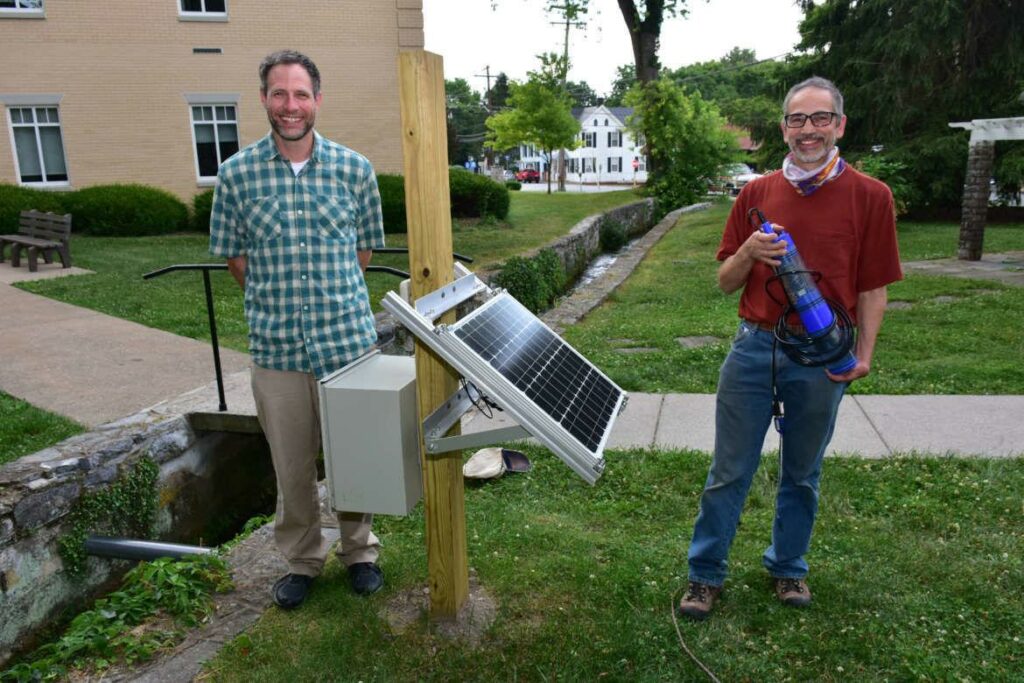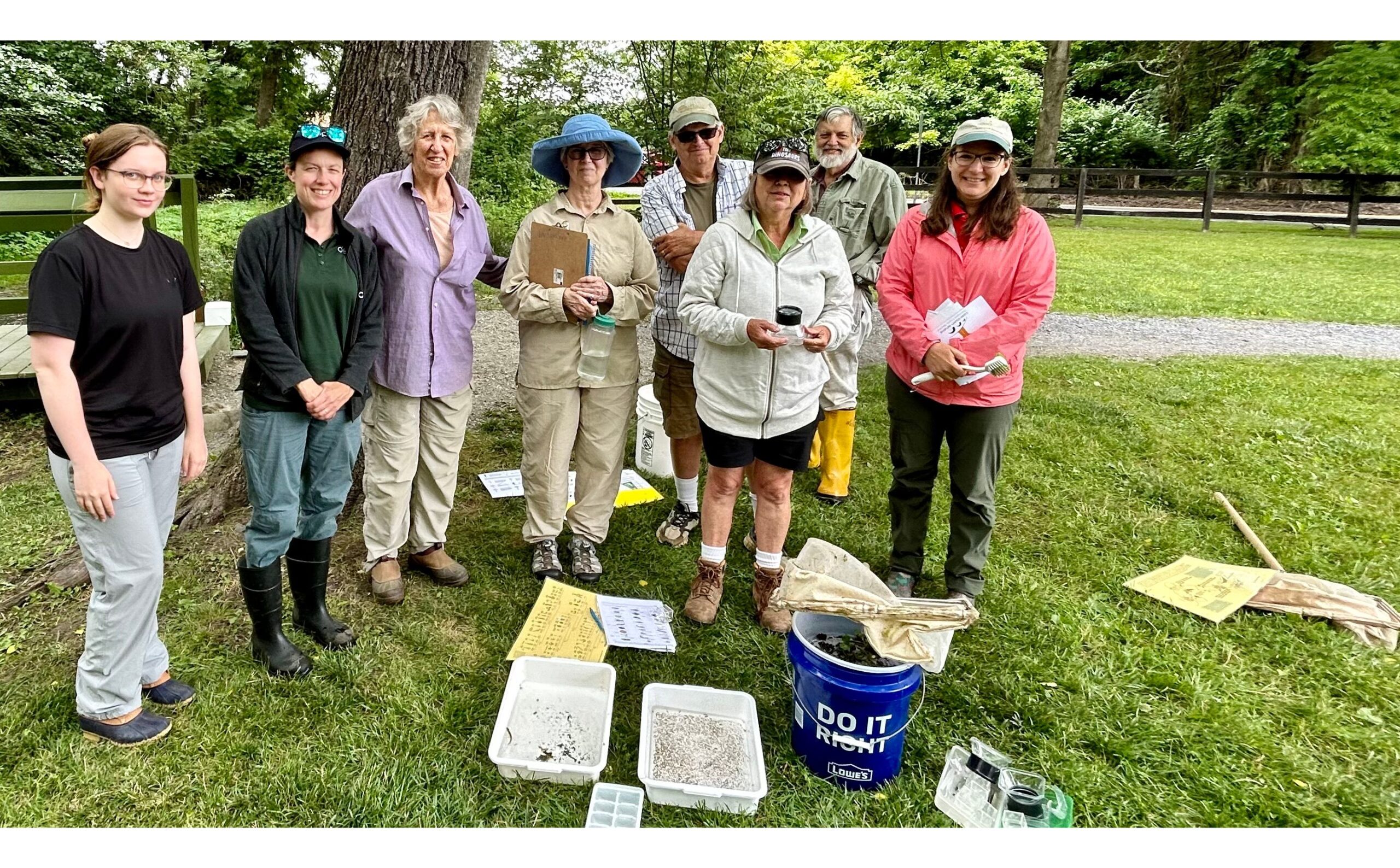August 6, 2020
SHEPHERDSTOWN, WV — Shepherd University’s Department of Environmental and Physical Sciences is using a $6,700 grant from the Corporation of Shepherdstown to monitor water quality in the Town Run.
Dr. Jeff Groff, department chair, and Dr. Peter Vila, associate professor of environmental and physical sciences, have installed a monitoring station on the creek that will show water and discharge levels and will measure oxygen, pH, temperature, and conductivity. The station is solar powered and will upload the data to the web using Wi-Fi.
“We will make the data available in real time for people to view,” Groff said. “There will be a web application that will show current conditions and historical trends.”
“It is nice people can sense what’s happening in their watershed and have an appreciation for the water quality and the impacts that certain aspects may have on the water quality such as rain and discharge,” Vila said. “It’s good to know the background water characteristics, the quantities, and the chemical nature of the water.”
The Potomac River is Shepherdstown’s primary water source and the Town Run is its secondary water source, so the new monitoring station will benefit both the town and the university.
“Shepherdstown is delighted to be a partner in this project that shows the value of a positive town-gown relationship,” said Jim Auxer, Shepherdstown mayor. “The daily information gained from the monitoring system of our secondary water source has proven to be invaluable in improving water quality.”
“Monitoring the Town Run will provide data regarding the seasonal and long-term changes in quantity and quality that occur with this critical resource and will facilitate strategic planning regarding the current and future use of the Town Run as a drinking water source,” Vila said.
The grant covers cost of the equipment and a stipend for a student to help with the project. The monitoring station will also benefit students in several classes, such as Stream Ecology, Hydrology, Applications of Electronic Monitoring, and Physical Computing.
— 30 —










